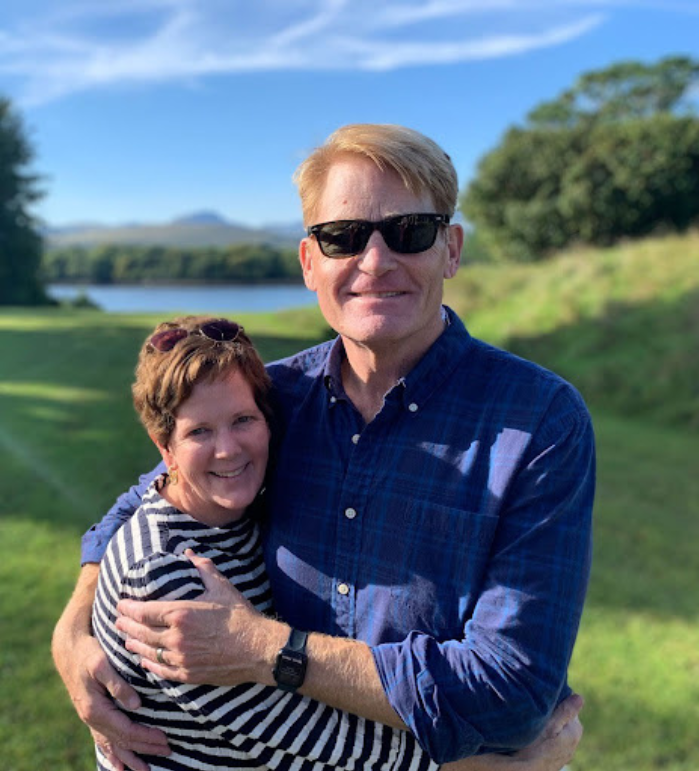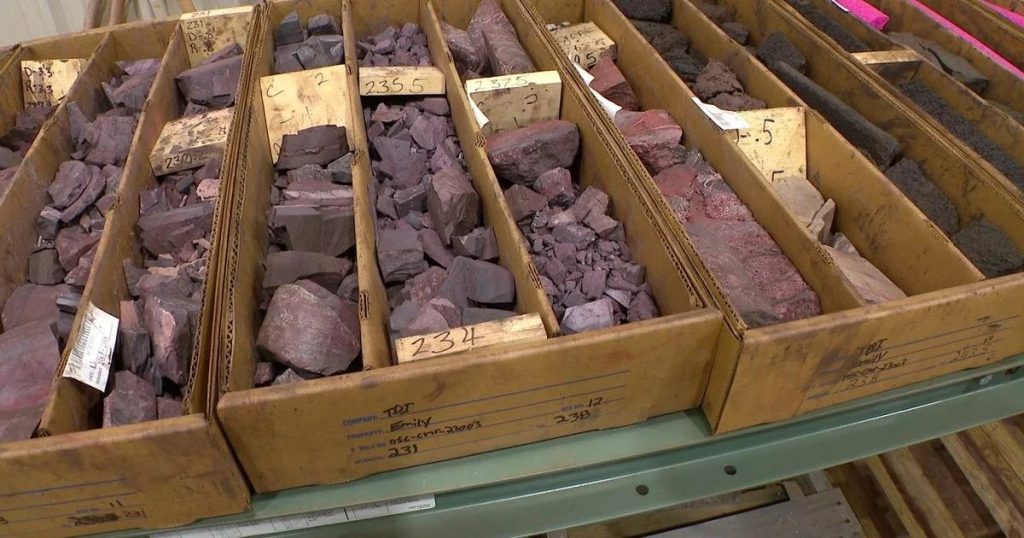By Lily Carr, Civic Leader and Program Coordinator, MLR
In the midst of ever complex and contentious mining debates, the Emily Mine Information Group (EMIG) is making a case for the effectiveness of Civic Organizing as a method by which to inform and organize community members in a completely new way- not against mining, but for water.



The town of Emily is situated in the heart of Minnesota lake country, on what could be the largest, and richest, manganese ore deposit in North America. In 2020, North Star Manganese put forth a mineral lease request to the DNR for 800 acres of state land less than two miles from downtown Emily; the site of a proposed manganese mine. As the shift to sustainable power grows, demand for manganese— a component of lithium-ion batteries—increases. Transportation accounts for most of the state’s greenhouse gas emissions, and transitioning to electric vehicles, a key part of Minnesota’s Carbon Reduction Strategy, relies on imported manganese.
While mining manganese offers a path to long-term environmental benefits by reducing carbon emissions, it also poses significant challenges. Historically, manganese mining has harmed the environment, particularly in water-rich areas, leading to erosion, sedimentation, wetland dewatering, and contamination of surface water and aquifers with toxic chemicals. In the land of 10,000 lakes, where the outdoor recreation economy accounts for $9.9 billion in gross domestic product, 91,336 jobs, and $4.7 billion in overall compensation (U.S. Bureau of Economic Analysis), these effects on water resources would be greatly felt.
There are also significant human health impacts. Exposure to high levels of manganese can cause Manganism, a permanent neurological disorder that can lead to tremors, difficulty walking, and facial muscle spasms. Other symptoms include behavioral changes, weakness, lethargy, irritability, aggressiveness, and hallucinations. Manganese exposure can also cause respiratory disease, reduced fertility, and adverse neurological impacts to children.
The Emily Mine Information Group situates itself in the tension between two public goods; Climate action and protection of the economy. Widespread future environmental protection through carbon reduction is, as of right now, synonymous with immediate localized environmental degradation through mining.

Five Emily residents formed EMIG in response to the mineral lease request with part of their mission implying the need to “evaluate and disseminate the information regarding the risks and benefits of the proposed Emily manganese mine to support economic opportunities but in a way that is consistent with the natural resources we have to conserve, and also to preserve our community health.”
EMIG recognizes there is a clear public good to reducing carbon emissions in our atmosphere balanced against the clear public good of protecting water resources, the resource based economy and human health.
Since its formation, the group has remained steadfast in its public commitment to be for water, rather than against mining. It occupies a thoughtful middle-ground, with a focus on maintaining close working relationships with people on all sides of the situation.
Dan Brennan, Ruth Lake Improvement District president and Emily resident, has been continuing discussions with the CEOs of North Star Manganese as well as their parent company, Electric Metals Limited, and with the Mayor of Emily.

“We’re open to hearing all sides of the argument. I think we work hard to maintain and establish relationships with stakeholders on all sides of the issue. And really, we want to ensure that we do what we can to keep this dialogue productive and not hostile” emphasizes Amy Flynn Brennan, one of the founding members of EMIG.
Amy, Dan and the 3 other founding members of the group, Jan and Mark Mosman and Anna Cerelia Battistini, work hard to ensure that they are gathering accurate information about how the proposed mine could potentially benefit and harm their town, as well as the state. “This can be a very polarizing topic- and so we’re really trying hard to keep the information grounded in fact” Flynn Brennan remarks.
The group is learning and working with other communities that are facing similar mining prospects, like the Tamarack Water Alliance from Tamarack, MN, the site of a proposed Nickel mine. EMIG has also been in contact with the Minnesota Pollution Control Agency (MPCA) and hydrologists, geologists, neurologists, and chemists from across the country, seeking unbiased information on potential outcomes of the mine.
Along with the task of collecting accurate science and data, members of the group have been finding ways to share it effectively with their community members. “How do we find expertise to give us a knowledge base so we can help get balanced information out there and have some direction in our information campaign out to the community?” asks Flynn Brennan.

They want to give people the tools they need to realize their power as stakeholders in this issue. “Some of it is also the teaching, right? Giving people the skills to engage because most of us are not very political people. So, making sure people have the tools they need to feel comfortable and confident engaging in the right way. To keep it not hostile, but healthy.”
At a moment in time when the very word politics makes many Americans shudder, EMIG recognizes that what it is doing is the very definition of politics; “activities that are associated with making decisions in groups, or other forms of power relations among individuals, such as the distribution of status or resources.”
This is perhaps the most powerful element of EMIG’s work; Organizing an informed base of water advocates made up of people from both sides of the aisle and encouraging them to view themselves as changemakers. To this end, members not only attend City Council meetings, they make sure their community members are equipped to speak on the issues at hand. They have prepared write ups to distribute that prepare people for how to speak in these sorts of settings, and how to engage local politicians in a thoughtful and proactive way.

EMIG uses the institutions present in their community as a base to organize, they are aware of their power in the situation, and they have a huge stake in the preservation of their resources and the city of Emily as they know it. This is the appropriate role of the citizen. They work for the public good of clean and healthy water by recognizing the obligation of citizens and institutions to engage in policy that promotes this public good. This recognizes the power in all of us to address issues in the invariable tension between self-interest and public good. Expanding our definition of “Citizen” strengthens democratic processes and provides a greater degree of justice.
The alternative strategy is to vilify the other side, to finger point and name call. We see examples of groups that “fight” for a cause instead working to build the relationships and understandings necessary to advance solutions. The work EMIG is doing on a very controversial issue is focused not on fighting, but protecting water, building a stronger civic base, bringing community together and increasing the political capital that will be necessary for the community to address future difficult issues.
Minnesota Lakes and Rivers is a Civic Organization in the Midwest Active Citizenship Initiative, MACI. This Civic Organizing Framework places the citizen at the center of policy making, working within the institutions where they have the power to act. MLR is working with the Emily Mine Information Group to create a Civic Pilot Exploration and focus resources on civic leadership development within the group. Whether it’s tackling mining debates, preventing the spread of aquatic invasive species, or working to protect shoreline, Civic Organizing provides a structured way forward, through raising the capacity of individuals as policy makers. We all have a stake in clean water, and it is by using our collective definition of the common good that we can enact just and equitable protection of this valuable resource. If you or your organization is interested in this model for organizing a base of support for water in your area, please contact Lily at lily@mnlakesandrivers.org.
